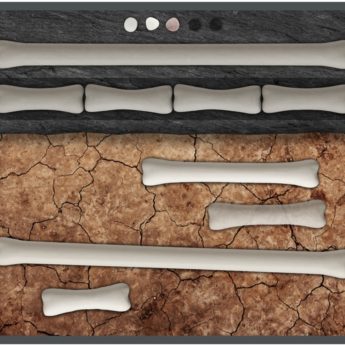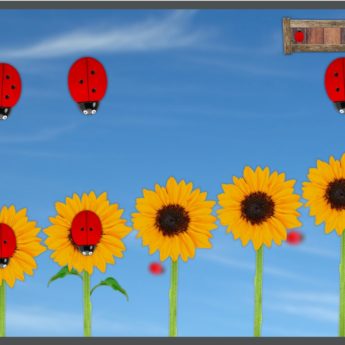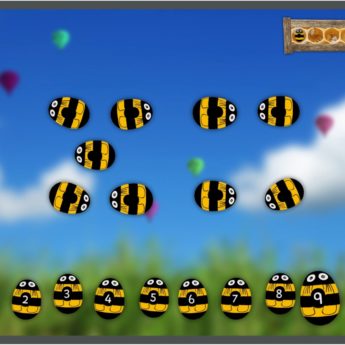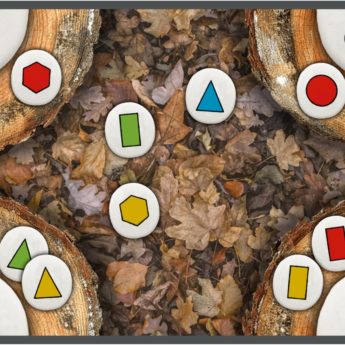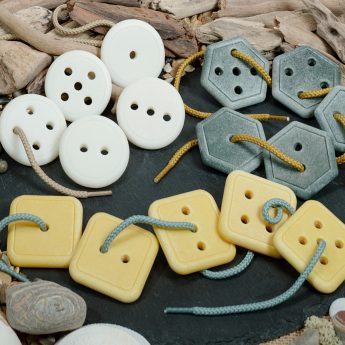Top Picks for – Early Maths
This range of maths resources has been selected with parents in mind, as they play and learn at home with their children. They all work well for one-to-one learning and are designed to be taken outdoors too!
Ladybugs Counting Kit
When thinking about numbers, it is important for children to understand that a numeral represents a quantity of things. These appealing ladybug stones help young children develop their counting skills. From enjoying counting one ladybug at a time, to starting to count the number of dots on their backs, to later being able to quickly recognise this number by sight, there is a progression of maths learning and understanding to be had, including odd/even numbers and addition. Designed for the outdoors, both the ladybug stones and the activity cards are made of robust materials and can be enjoyed in water, soil or sand!
Introduce your child to the ladybugs in their natural environment (outside in the garden or in a large tray filled with twigs, leaves and other natural materials) and encourage them to find their own way of setting out the ladybugs. They will start to sort and explore the bugs and may do this by the colour of their eyes or by looking at the spots.
Activity idea: Making bug homes
Ask your child to build a tower or house for each ladybug using the same quantity of building blocks as the number of spots on each bug. Ask them to go outside and collect the same quantity of objects (stones, sticks, leaves etc) as spots on the bugs and add these to their constructions. If two or more ladybugs share homes then the counting may be extended beyond ten.
Honey Bee Number Kit
This set of busy bees and activity cards help children to deepen their understanding of number, sequences, number bonds, and early addition and subtraction problems. Their sensory and robust nature makes them perfect for all sorts of maths investigations in different contexts, both indoors and outside.
Activity idea: We’re going on a bee hunt!
Children love treasure hunts and the honey bees are ideal for hiding in their natural environment. You could make a simple set of paper or card flower heads, each with a different numeral and/or number array from 1 to 10 drawn on it. Hide these at eye level around your outdoor space and then ask your child for their help in finding the bees and their matching number or array. Once found, you could arrange the bees and flower heads in a number line from 1 to 10 and talk about counting, matching, one more/one less, odd and even numbers.
Number Pebbles
These versatile number stones will appeal to children’s natural instincts to explore, investigate, sort and collect. They are durable and can be easily cleaned after using them outdoors or part of messy play activities. During their play children can learn how to count on/back, create number lines, learn about the different ways to make 10 and much more!
Activity idea: Number dig
If you have a sand pit at home you could hide the pebbles in the sand, along with natural stones, and let your child excavate and transport the number pebbles with diggers or trucks. You could also do this in soil or use a bucket of water to create a wet lucky dip! Once discovered, place each number pebble on their own blank piece of paper and encourage your child to tell you what they know about that number. They may recognise their age, or their house number for example. On the paper, help them to scribe their ideas. For an inside activity, they could take a pebble and see if they can find matching numerals around the house (on cereal packets, books, phones etc).
Sorting Stones
This colourful set of tactile stones help children to develop the skills of comparing, sorting and classifying, as well as pattern making. These are all important skills that help with future maths concepts, problem solving and logical thinking. The versatile nature of this set means that the bugs can be sorted by colour and shape. Children will find lots to talk about as they explore the stones. Offer them a segmented tray or a selection of smaller trays/bowls and see how they start to sort the bugs independently.
Activity idea: Bug bingo
Create a 3 by 2 grid either on a piece of paper or chalked on the ground for each player. Ask your child to lay out 6 bug stones in their grid. Call out something different for them to look for each time (e.g. a square body, a yellow bug etc). They may turn over one matching bug stone each time. The winner is the first person to turn over all their stones.
Dinosaur Match & Measure Bones and Activity Cards
Calling all budding palaeontologists! These bones and activity cards are perfect for all dinosaur lovers. There are so many possibilities for how these can be used in role-play and investigative activities, and they will inspire as much storytelling as maths language. From the moment they are discovered (dug up from soil or sand), encourage children to handle them carefully. They are made of a robust material, but it adds to their mystery and appeal to treat them as if they were the real thing! As children discover them, they can sort the bones by length, measure them against each other and objects around the garden or in the house.
Activity idea: Dino dig and display
Bury the bones outside or in sand. Ask your children to dig them up carefully; provide gloves and a selection of brushes to help with the excavation. When they have dug them all up, talk to them about their discoveries. Perhaps they could make their own information labels and create a museum display or match them up to their dinosaur play figures? Which bone might come from which type of dinosaur and why? If you have any dinosaur fact books, have these nearby for children to explore. Here is a list of some dinosaur storybooks you might like to share together: dinosaur recommended reading
Did you know there is also a range of maths apps to go with all of these physical resources?

 Register/Log in
Register/Log in
 Basket
Basket






